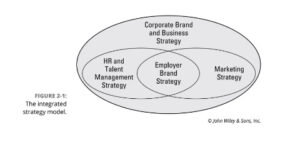Employee ownership is a business model that is gaining popularity around the world. In an employee-owned company, the employees hold a significant stake in the business, either through stock ownership or other forms of equity. This ownership gives employees a say in how the company is run and can lead to increased motivation, productivity, and job satisfaction. In this article, we’ll explore the stories behind some successful employee-owned companies.
Publix Super Markets
Publix Super Markets is a grocery store chain based in the southeastern United States. The company was founded in 1930 by George Jenkins, who believed that happy employees would lead to happy customers. In 1974, Jenkins introduced an employee stock ownership plan (ESOP), which allowed employees to own shares in the company. Today, Publix is 100% employee-owned, with over 200,000 employees holding shares in the company.
Publix is consistently ranked as one of the best places to work in the United States, thanks in part to its employee ownership structure. According to the company, employee owners are more engaged and motivated, which leads to better customer service and higher sales. Publix also offers its employees a range of other benefits, such as profit-sharing bonuses, tuition reimbursement, and a retirement plan.
W.L. Gore & Associates
W.L. Gore & Associates is a manufacturing company that produces a range of products, including Gore-Tex fabric and medical devices. The company was founded in 1958 by Bill Gore, who believed that a non-hierarchical structure and employee ownership would lead to innovation and success. Today, W.L. Gore is 100% employee-owned, with over 10,000 employees in 30 countries.
At W.L. Gore, employees are referred to as “associates” and have a high degree of autonomy and freedom. The company has no traditional hierarchy, and associates are encouraged to pursue their own projects and ideas. According to the company, this approach has led to a culture of innovation and has allowed W.L. Gore to develop many successful products.
New Belgium Brewing
New Belgium Brewing is a craft beer company based in Fort Collins, Colorado. The company was founded in 1991 by Jeff Lebesch and Kim Jordan, who wanted to create a business that was both environmentally and socially responsible. In 1995, the company became partially employee-owned, and in 2012, it became 100% employee-owned.
New Belgium Brewing has a strong commitment to sustainability and social responsibility. The company sources many of its ingredients locally, uses renewable energy, and has implemented a number of environmentally-friendly practices. As an employee-owned company, New Belgium Brewing also offers its employees a range of benefits, including profit-sharing bonuses and a retirement plan.
CH2M Hill
CH2M Hill is an engineering and construction company based in the United States. The company was founded in 1946 by Clair Hill and Elmo Smith, and today it has over 20,000 employees in 80 countries. CH2M Hill became an employee-owned company in 1984, and today over 90% of its employees hold shares in the company.
According to the company, employee ownership has led to a culture of collaboration and innovation. CH2M Hill has won numerous awards for its employee ownership structure and its commitment to social responsibility. The company also offers its employees a range of benefits, such as profit-sharing bonuses and a retirement plan.
John Lewis Partnership
John Lewis Partnership is a UK-based retailer that operates department stores and supermarkets. The company was founded in 1929 by John Spedan Lewis,
In addition to the companies mentioned above, there are many other successful employee-owned companies around the world, including:
Arup, an engineering and design firm based in the UK
Semco Partners, a Brazilian conglomerate with interests in many different industries
Amana Mutual Funds, a US-based mutual fund company
King Arthur Flour, a US-based flour and baking company
Research has shown that employee ownership can have many benefits for both companies and employees. For example, employee-owned companies often have higher levels of job satisfaction and lower turnover rates, which can lead to cost savings for the company. Employee ownership can also lead to increased productivity, innovation, and a sense of ownership among employees, which can translate into improved business outcomes.
There are several different ways to structure an employee-owned company, including ESOPs, cooperatives, and other forms of shared ownership. Each structure has its own benefits and drawbacks, and companies considering employee ownership should carefully consider which model is best suited to their needs.
Employee-owned companies are gaining popularity around the world as a successful business model that benefits both the employees and the company as a whole. In an employee-owned company, the employees hold a significant stake in the business, either through stock ownership or other forms of equity. This ownership gives employees a say in how the company is run and can lead to increased motivation, productivity, and job satisfaction. In this article, we will explore the stories behind some successful employee-owned companies and discuss the research and literature on employee ownership.
Publix Super Markets is a grocery store chain based in the southeastern United States. The company was founded in 1930 by George Jenkins, who believed that happy employees would lead to happy customers. In 1974, Jenkins introduced an employee stock ownership plan (ESOP), which allowed employees to own shares in the company. Today, Publix is 100% employee-owned, with over 200,000 employees holding shares in the company. According to the company, employee ownership leads to better customer service and higher sales. Publix also offers its employees a range of other benefits, such as profit-sharing bonuses, tuition reimbursement, and a retirement plan.
In their book, “The Citizen’s Share: Putting Ownership Back into Democracy,” Joseph R. Blasi, Richard B. Freeman, and Douglas L. Kruse profile several successful employee-owned companies, including Publix Super Markets. They argue that employee ownership can lead to better company performance and employee well-being, as employees are more invested in the success of the company.
W.L. Gore & Associates is a manufacturing company that produces a range of products, including Gore-Tex fabric and medical devices. The company was founded in 1958 by Bill Gore, who believed that a non-hierarchical structure and employee ownership would lead to innovation and success. Today, W.L. Gore is 100% employee-owned, with over 10,000 employees in 30 countries. At W.L. Gore, employees are referred to as “associates” and have a high degree of autonomy and freedom. The company has no traditional hierarchy, and associates are encouraged to pursue their own projects and ideas. According to the company, this approach has led to a culture of innovation and has allowed W.L. Gore to develop many successful products.
In their book, “Employee Ownership: The New Source of Competitive Advantage,” Corey Rosen and John Case explore the advantages of employee ownership and provide case studies of successful employee-owned companies, such as W.L. Gore & Associates. They argue that employee ownership can lead to increased innovation, productivity, and employee well-being.
New Belgium Brewing is a craft beer company based in Fort Collins, Colorado. The company was founded in 1991 by Jeff Lebesch and Kim Jordan, who wanted to create a business that was both environmentally and socially responsible. In 1995, the company became partially employee-owned, and in 2012, it became 100% employee-owned. New Belgium Brewing has a strong commitment to sustainability and social responsibility. The company sources many of its ingredients locally, uses renewable energy, and has implemented a number of environmentally-friendly practices. As an employee-owned company, New Belgium Brewing also offers its employees a range of benefits, including profit-sharing bonuses and a retirement plan.
In their book, “The Citizen’s Share: Putting Ownership Back into Democracy,” Blasi, Freeman, and Kruse profile New Belgium Brewing as a successful employee-owned company. They argue that employee ownership can lead to increased innovation, productivity, and social responsibility.
CH2M Hill
CH2M Hill is an engineering and construction company based in the United States. The company was founded in 1946 by Clair Hill and Elmo Smith, and today it has over 20,000 employees in 80 countries. CH2M Hill became an employee-owned company in 1984, and today over 90% of its employees hold shares in the company.
According to the company, employee ownership has led to a culture of collaboration and innovation. CH2M Hill has won numerous awards for its employee ownership structure and its commitment to social responsibility. The company also offers its employees a range of benefits, such as profit-sharing bonuses and a retirement plan.
King Arthur Flour
King Arthur Flour is a 100% employee-owned company that has been in business since 1790. The company is based in Norwich, Vermont, and produces a variety of baking products, including flour, baking mixes, and kitchen tools. King Arthur Flour became an employee-owned company in 2004, and today all of its employees hold shares in the company.
According to the company, employee ownership has helped to create a strong culture of innovation and a commitment to quality. King Arthur Flour is also committed to social responsibility and sustainability, using environmentally-friendly packaging and sourcing its ingredients from responsible suppliers. In addition to equity ownership, the company offers its employees a range of benefits, including profit-sharing bonuses and a wellness program.
WinCo Foods
WinCo Foods is a grocery store chain based in the western United States. The company was founded in 1967 by Ralph Ward and Bud Williams and is currently owned by its employees through an ESOP. WinCo Foods has over 20,000 employees and operates more than 130 stores in 10 states.
WinCo Foods has been successful in part due to its employee ownership structure. According to the company, employee owners are more invested in the success of the business and are motivated to provide excellent customer service. The company also offers its employees a range of benefits, including profit-sharing bonuses, a retirement plan, and access to a company-funded health plan.
Ariens Company
Ariens Company is a manufacturer of outdoor power equipment, including snow blowers, lawn mowers, and garden tractors. The company was founded in 1933 by Henry Ariens and is currently owned by its employees through an ESOP. Ariens Company has over 1,500 employees and operates manufacturing facilities in the United States and United Kingdom.
According to the company, employee ownership has helped to create a culture of innovation and a commitment to quality. Employee owners are encouraged to share their ideas and are given the freedom to experiment and try new approaches. Ariens Company also offers its employees a range of benefits, including profit-sharing bonuses, a retirement plan, and a wellness program.
there are several employee-owned companies in Asia as well. Here are a few examples:
Wacoal Holdings Corporation – Wacoal is a Japanese company that produces women’s lingerie and underwear. The company has been employee-owned since 1956, when the founder, Koichi Tsukamoto, introduced an employee shareholding plan. Today, over 30% of the company’s shares are held by employees.
Taiwan Fertilizer Company – Taiwan Fertilizer is a chemical company based in Taiwan. The company was founded in 1946 and became an employee-owned company in 1985, when the government sold its shares to the employees. Today, the company is 93% employee-owned, with over 3,000 employees holding shares in the company.
Emami Limited – Emami is an Indian company that produces a range of consumer goods, including personal care products and healthcare products. The company became employee-owned in 2012, when the founders sold a 10% stake to employees through an employee stock option plan. Today, over 17% of the company’s shares are held by employees.
Monaghan Mushrooms – Monaghan Mushrooms is an Irish company that produces mushrooms for the food industry. The company has operations in several countries, including China and India, and became employee-owned in 2014, when the founder, Ronnie Wilson, sold a majority stake to employees through an employee share ownership plan.
These are just a few examples of employee-owned companies in Asia. There are many other companies in the region that have adopted this business model and are seeing success as a result.
Conclusion
Employee ownership is a business model that has proven successful for many companies around the world. In addition to creating a sense of ownership and motivation among employees, it can lead to increased innovation, collaboration, and social responsibility. The companies profiled in this article have all found success with employee ownership and offer valuable lessons for businesses looking to adopt this model.
There is also a growing body of research and literature on employee ownership, which suggests that it can be a successful model for business ownership and can lead to improved outcomes for both companies and their employees. The books and academic journals referenced in this article offer additional insights and evidence supporting the benefits of employee ownership.
Research has shown that employee ownership can have many benefits for both companies and employees. For example, employee-owned companies often have higher levels of job satisfaction and lower turnover rates, which can lead to cost savings for the company. Employee ownership can also lead to increased productivity, innovation, and a sense of ownership among employees, which can translate into improved business outcomes.
There are several different ways to structure an employee-owned company, including ESOPs, cooperatives, and other forms of shared ownership. Each structure has its own benefits and drawbacks, and companies considering employee ownership should carefully consider which model is best suited to their needs.
Employee ownership is a growing trend in business ownership, and it has the potential to offer many benefits for both companies and their employees, there are several references to employee-owned companies in books and academic journals. Here are a few examples:
“The Citizen’s Share: Putting Ownership Back into Democracy” by Joseph R. Blasi, Richard B. Freeman, and Douglas L. Kruse: This book discusses the benefits of employee ownership and profiles several successful employee-owned companies, including Publix Super Markets, W.L. Gore & Associates, and New Belgium Brewing.
“Employee Ownership: The New Source of Competitive Advantage” by Corey Rosen and John Case: This book explores the advantages of employee ownership and provides case studies of successful employee-owned companies, such as CH2M Hill and King Arthur Flour.
“Employee ownership, motivation, and productivity” by David Marsden and Richard Freeman, in the Journal of Labor Economics: This academic article analyzes the relationship between employee ownership and firm performance, using data from several UK-based employee-owned companies.
“Employee ownership and participation effects on firm outcomes” by Joseph R. Blasi, Richard B. Freeman, and Christopher Mackin, in the Journal of Economic Perspectives: This academic article reviews the empirical evidence on the effects of employee ownership and participation on firm outcomes, drawing on research from a variety of industries and countries.
Overall, there is a growing body of research and literature on employee ownership that suggests it can be a successful business model, leading to improved outcomes for both companies and employees. Whether currently or in the future, employee ownership should be considered by businesses looking to create a positive work environment and improve their bottom line. By giving employees a stake in the company and a voice in its management, businesses can create a more engaged and motivated workforce, better positioned for success.







